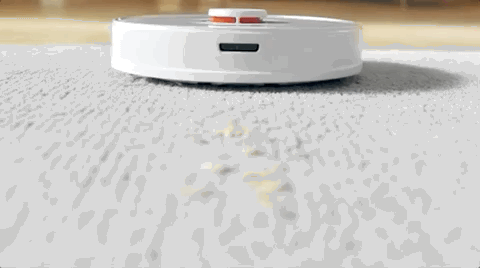The Principle and Application of Using Ultrasonic Sensors in Robot Vacuum Cleaners
- Share
- publisher
- Zoe
- Issue Time
- Aug 17,2024
Summary
The principle and application of using ultrasonic technology in robot vacuum cleaner to identify carpets are similar to A-ultrasound diagnosis, which judges the floor material through echoes. Compared to AI target detection, ultrasonic technology is not limited by conditions such as lighting and color.

The Robot Vacuum Cleaner 4.0 is now equipped with a new sensor—an ultrasonic sensor, which solves the problem of recognition between floors and carpets.

What is Ultrasonic Sensor?
An ultrasonic sensor is a device that converts ultrasonic signals into other energy signals (usually electrical signals). Ultrasonic waves are mechanical waves with a vibration frequency higher than 20kHz and a wavelength exceeding the human ear's audible range (20 Hz ~ 20 kHz). They are characterized by high frequency, short wavelength, minimal diffraction, particularly good directivity, and the ability to propagate directionally like rays. In daily environments, they are almost immune to interference except for coherent waves and pose no harm to humans.

Its applications in medicine, automotive, drones, and other industries are very extensive.
Ultrasonic sensors are also widely used in cars and drones.
For example, reverse parking sensors.

Why do robot vacuum cleaners need ultrasonic sensors?
In fact, ultrasonic sensors help robot vacuum cleaners 'identify' carpets. Once equipped with an ultrasonic sensor, the robot vacuum can determine the type of floor material.
When encountering a smooth floor, due to the reflective mode, the ultrasonic waves are minimally absorbed by the floor, and the sensor detects a continuous 'bouncing back' of waves.

However, when the robot encounters a carpet with fibers, based on the non-reflective mode, the ultrasonic waves are absorbed by materials with strong sound absorption properties, such as felt, wool, cotton, or sponge foam. At this point, the robot vacuum does not receive an echo and recognizes that it is approaching a carpeted area.

Why choose ultrasonic detection over the most advanced AI object detection algorithms?
If AI object detection relies on 'vision,' then ultrasonic sensors function more like 'touch' detection.
The actual effectiveness of AI object detection depends on many factors, such as lighting, carpet color, detection angle, real-time processing speed, and camera resolution.
For example, in conditions with poor lighting and dark-colored carpets, AI is likely to misidentify the carpet as the floor. However, due to the working principle of ultrasonic sensors, they are not affected by these factors, thus avoiding such misjudgments.
Recommended Ultrasonic Sensors
Detection range: 20-120 mm
Detection range: 20-200 mm
Material: copper nickel plating
Connection type: 4-pin M12 connector
Detection range: 100-2000 mm, 200-4000 mm, 350-6000 mm
Material: copper nickel plating, plastic fittings
Connection type: 5-pin M12 connector
Detection range: 30-300 mm, 50-500 mm, 60-1000 mm
Material: copper nickel plating, plastic fittings
Connection type: 5-pin M12 connector
Detection range: 100-2000 mm, 150-3000 mm
Material: plastic accessories, filled with epoxy resin
Connection type: 5-pin M12 connector



